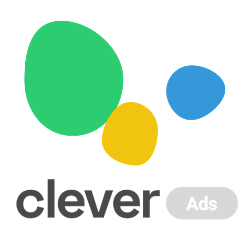Contentful
Connect Contentful with Webflow to manage content through APIs, code embeds, or automation platforms. This integration lets content teams update entries in Contentful while Webflow handles presentation and hosting, separating content management from site delivery.

How to integrate Contentful with Webflow
Webflow handles site design and hosting while Contentful manages structured content and multi-platform delivery. This separation works when you need complex content modeling beyond Webflow's native CMS, content distribution across multiple channels, or advanced content workflows.
Contentful doesn't offer a native Webflow marketplace app, but you can integrate through Webflow Code Embed elements, automation platforms like Zapier and n8n, or direct API connections.
Embed Contentful content with code elements
Use Webflow's Code Embed element to fetch content from Contentful using client-side JavaScript. The script runs in the browser and makes API requests when visitors load your page.
You can use Collection fields in custom code embeds to bind dynamic identifiers from Webflow CMS items to Contentful entries.
This integration enables the following capabilities:
- Fetch and display Contentful entries using the Content Delivery API
- Render rich text fields with client-side rendering libraries
- Pull image collections and display them in Webflow layouts
- Update content without republishing your Webflow site
Client-side fetching means content loads when visitors access your page rather than being pre-rendered on the server.
Connect through automation platforms
Zapier and n8n provide pre-built connectors that sync content between Contentful and Webflow without custom code. These platforms monitor Contentful for changes and automatically create or update corresponding items in Webflow collections.
Set up workflows that trigger when specific Contentful events occur. When someone publishes an entry in Contentful, the automation platform receives a webhook notification, transforms the content structure to match your Webflow collection fields, and posts the data through Webflow's API.
Some supported workflows include:
- Create Webflow items when Contentful entries reach specific publication statuses
- Map fields between Contentful content types and Webflow collection structures
- Sync media files from Contentful to Webflow's hosting
- Configure bi-directional sync workflows with proper error handling
Automation platforms add another service to your technology stack that requires monitoring and maintenance.
Build with Webflow and Contentful APIs
Direct API integration gives you complete control over content synchronization, transformation logic, and error handling. Build middleware (server code like n8n that connects the two platforms) using their REST APIs.
This approach runs your integration logic on a server. Your middleware receives webhooks from Contentful, processes the content, and calls Webflow's API to update your site.
Set up webhook-driven synchronization
Contentful's webhook API sends HTTP POST requests to your server when content changes. Configure webhooks to fire on specific events like entry publication or deletion. Filter by content type to receive only relevant notifications.
Your server validates webhook signatures using HMAC SHA256 verification, processes the entry data, and maps Contentful fields to Webflow's collection structure. The Webflow Collections API creates or updates CMS items with the transformed content.
Technical implementation steps include:
- Configure webhook endpoints at
POST https://api.contentful.com/spaces/{space_id}/webhook_definitionswith event filters and target URLs - Validate webhook signatures to confirm requests originate from Contentful's servers
- Map content structures between Contentful's content model and Webflow's collection schemas
- Handle rate limits with request queuing and exponential backoff for 429 responses
Rate limiting requires careful orchestration. Both Contentful and Webflow enforce API rate limits that vary by plan and endpoint. Queue updates in your middleware to respect both limits and implement retry logic for transient failures.
Synchronize assets and media
Images and files require direct URL references. Provide the Contentful CDN URL directly to Webflow collection item fields, and Webflow will fetch and host the asset. The Contentful Content Management API provides asset metadata and CDN URLs that you pass to Webflow's collection item fields.
Asset workflow steps:
- Fetch asset metadata from Contentful including CDN URLs, dimensions, and MIME types
- Reference the Contentful CDN URL in Webflow collection item image fields
- Webflow automatically fetches and hosts the asset from the provided URL
- Handle image transformations if Contentful delivers different formats or sizes than needed
Trigger site publishing
Call the publish endpoint after syncing content to make changes visible to visitors. Batch multiple content updates before triggering publication to work within this constraint.
Implement a queue system that collects content changes and publishes them together at scheduled intervals rather than immediately after each update.
Critical limitation: Webflow's publish API is limited to 1 request per minute. Your Webflow site doesn't update live until you publish it. This strict rate limit means you cannot publish content changes more than once per minute.
Bulk content migration
Start with an initial sync request to fetch all entries of specific content types. The Contentful Sync API efficiently transfers large content volumes during initial migration.
The API returns a sync token you'll use for subsequent requests. Transform the entries to match Webflow's collection schema and create collection items in batches using the Collections API.
For ongoing synchronization, use the sync token to request only changed entries since your last sync. This delta approach reduces API calls and processing time for regular updates.
What you can build
Integrating Contentful with Webflow separates content management from site presentation while maintaining design control.
- Multi-platform content distribution: Manage content once in Contentful and deliver it to your Webflow site, mobile apps, and other digital channels through APIs.
- Structured content modeling: Build detailed content models with custom field types, validation rules, and relationship structures that extend beyond Webflow's native CMS.
- Localized content management: Organize multi-language content in Contentful with locale-specific fields, then deliver localized versions to different Webflow sites or collection items.
- Approval workflows in Contentful: Route content through multi-stage approval processes in Contentful before syncing to Webflow.
Frequently asked questions
Configure webhooks in Contentful to send
HTTP POSTrequests when content changes. Your server receives the notification, validates the HMAC signature, and calls Webflow's Collections API to create or update CMS items. The Contentful webhook configuration documentation explains event types, payload structure, and filtering options. Implement webhook security verification to confirm requests originate from Contentful's servers.Yes, but this requires custom middleware to monitor both systems. Most implementations treat Contentful as the primary content repository and Webflow as a presentation layer. Bi-directional sync adds complexity because you need conflict resolution logic when the same content changes in both systems simultaneously.
Both platforms enforce different rate limits that vary by API endpoint and account tier. Check the current Webflow rate limiting documentation for your account tier. Implement request queuing in your middleware that respects both constraints. Add exponential backoff when receiving 429 rate limit responses. The Contentful Sync API provides efficient bulk operations for initial migrations.
Host middleware on server infrastructure that can accept incoming webhooks from Contentful and make outbound API calls to both platforms. Your infrastructure needs to handle request queuing for rate limit management. The n8n integration tutorial shows self-hosted workflow automation as one hosting option.
Preview capabilities require custom development since Webflow's native preview system only shows content in its own CMS. You would need to build a preview environment that fetches content from Contentful and renders it using your Webflow site's design patterns, allowing content editors to see changes before triggering the webhook that publishes to production.

Description
Contentful is a headless CMS that stores and delivers structured content through APIs. It provides flexible content modeling with custom field types and relationships, built-in localization support, and content delivery to multiple platforms like websites, mobile apps, and digital displays.
This integration page is provided for informational and convenience purposes only.

Notion
Connect Notion's flexible workspace with Webflow to create dynamic websites powered by collaborative content. Sync databases, automate publishing workflows, and build content-driven sites without code.

One2 Menu
SEO optimized Restaurant Menus with no code
Medium
Connect Medium's powerful publishing platform with Webflow to expand your content reach, automate syndication workflows, and maintain consistent brand experiences. Leverage Medium's 100M+ monthly readers while keeping full design control in Webflow.

MathJax
Render beautiful mathematical equations on your Webflow site with MathJax, the web's leading mathematical display engine. Transform complex LaTeX, MathML, and AsciiMath notation into crisp, accessible formulas that scale perfectly across all devices—no plugins or special viewers required.

Kajabi
Connect Kajabi's powerful course creation and membership platform with Webflow's design flexibility to build stunning educational websites. Deliver online courses, manage memberships, and process payments while maintaining complete creative control over your site design.

Jasper
Connect Jasper's AI-powered content generation with Webflow to create, optimize, and localize website content at scale. Generate on-brand copy, rewrite existing content, and translate pages — all without leaving Webflow.

Google Ads by Clever
Advertise on Google and grow your business with Clever Ads. Have your Google Ads Search & Display campaigns created for free.

EmbedStories (by EmbedSocial)
Connect EmbedStories with Webflow to automatically display Instagram Stories and custom photo stories on your website, keeping your content fresh and interactive without any coding.

Elfsight YouTube Gallery
Connect Elfsight YouTube Gallery to Webflow and display dynamic video content from YouTube channels, playlists, or individual videos. This integration enables businesses to showcase product demos, tutorials, testimonials, and more without coding knowledge.


